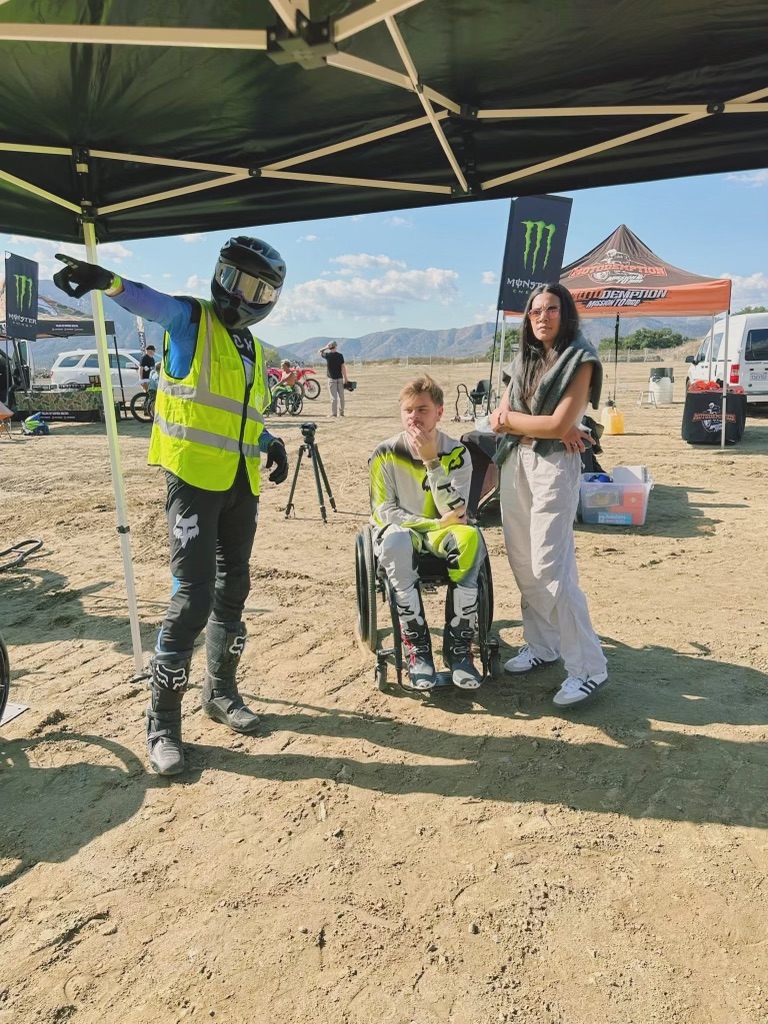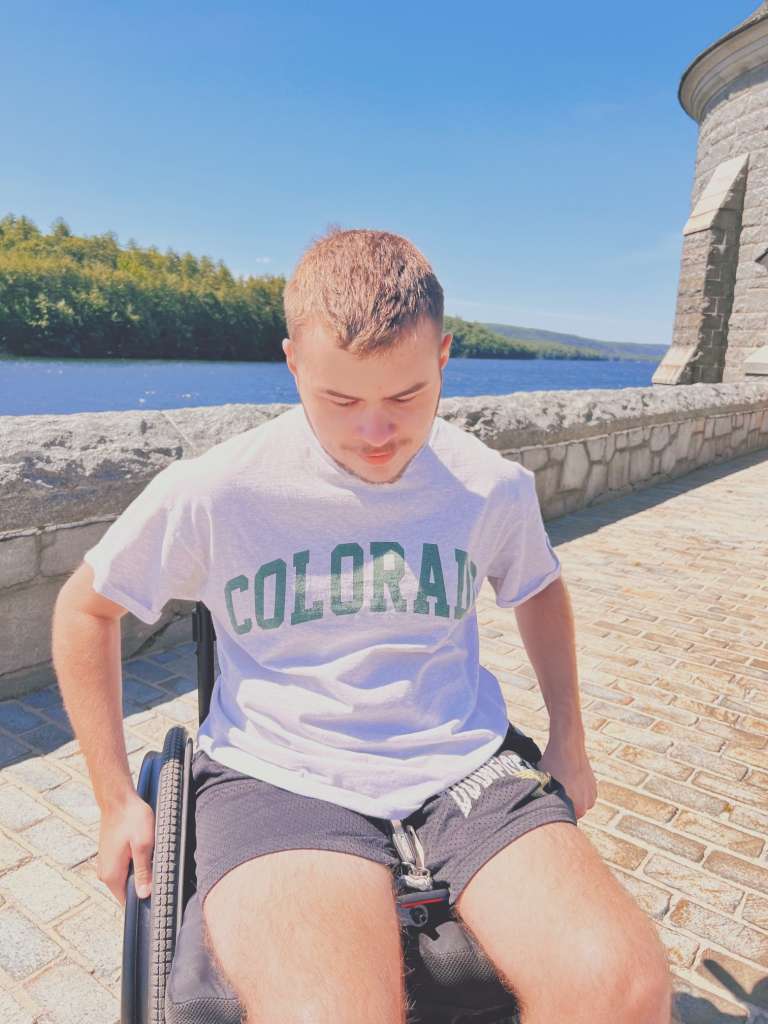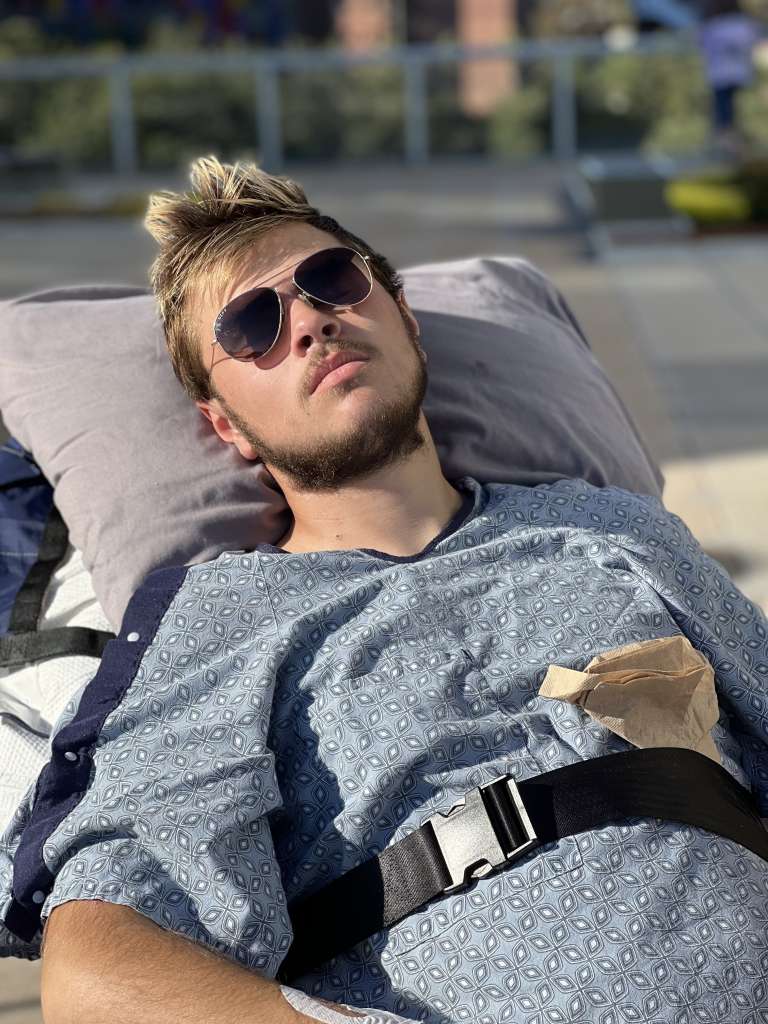Share This Article
Our sport is dangerous. Our sport gives. Our sport takes. I do think at times our motocross community forgets about the fallen heroes we once cheered for on TV or even the ones that were working through the ranks to become a professional. I even got in trouble at a press conference a while back, when I asked about a rider’s brother who recently got injured. Maybe it wasn’t the right time, but some people are genuinely concerned and like to know how a fallen rider is. It’s like no one wants to talk about the “other side” of the sport that sometimes can tear lives apart. My goal for Anthony is to write some articles on our website, not to bring everyone down or drag our sport through the mud, but it’s more of an awareness thing. Like hey, I am still here, I am still a person and can still be a part of the moto community! Just because injured riders don’t/can’t ride anymore doesn’t mean they can’t be a part of our community. Keefer Inc. Testing has never just been about dirt bikes. We like all aspects of this sport and the people that come with it. Good and Bad! I’ve stayed in contact with Anthony the past couple years and some days are better than others for him. Just like you and me! I like to give him an outlet to allow him to express his feelings through writing articles. It’s therapeutic. I know it is for me, so hopefully it is for him. -KK
Written By: Anthony Picchione
Injuries are by far the worst part of motocross. Whether it be a season ending injury or a life altering injury, each comes with its own unique set of challenges that affect daily life. Before my SCI (Spinal Cord Injury), I knew nothing about what living life in a wheelchair looked like. Like everybody who throws their leg over a dirt bike, you know sustaining a SCI resulting in paralysis is a possibility but you put that behind you for the love of riding. Unfortunately, after my crash at the end of 2021 that left me paralyzed from the chest down, I’ve had to learn first hand what life is like in a wheelchair. And trust me it’s a lot more than not being able to walk! Like Kris had said when he originally started putting some of my writing on his website, Keefer Inc. Testing is more than just a place to find bike tests and baseline setups; it’s a place to shed light on all parts of the sport we love so much, from the good, to the bad, to the ugly. So below I’ve detailed some pain points in my life to allow those curious about what life looks like for myself as well as others who have sustained a similar injury at the hands of our sport.

The Inability to Walk
I guess this one is pretty obvious; but not being able to walk is pretty crappy. Not only is being in a wheelchair a huge inconvenience in terms of getting around and doing normal daily activities, it adds a level of difficulty to every task that you do. Take something as simple as turning on your dryer. For most, this is something you don’t even think about doing. But for someone in my situation who physically can not reach the button to start the dryer, it goes from being a two second job to something that you have to plan out and ask for help so you have clean clothes for the week. And it’s even more frustrating for someone like me who hates waiting around for other people or asking for help. This same frustration extends far past starting the dryer. Other simple things such as grabbing food from the microwave, taking out the garbage, or grabbing something from the closet can be extremely bothersome chores. Outside of daily activities, not being able to walk brings along other problems in terms of your health. Humans are meant to get up and walk on two feet. So when you can’t do that, your body starts to face issues that you wouldn’t necessarily think about. These might include, lack of circulation, loss of muscle in your legs, decrease in bone density, and skin breakdown/pressure sores from sitting in one spot for two long. These all add up to be a lot to think about on a day to day basis. I sometimes find it hard to focus on normal life as I am constantly thinking about my health and monitoring the parts of my body that I can’t feel to make sure that there’s no issues.

The Mental Aspect
While not necessarily a physical challenge that I face as a result of my injury, I would argue that dealing with the mental aspect of what happened to me is a more daunting task. As time passes, I get more and more used to living in a wheelchair. Acts like pushing myself around and manual moving my legs into bed which once felt so foreign, have become second nature. On the contrary, trying to mentally digest what happened to me is a constant battle no matter how many days go by. Even when I try my hardest to block out the thoughts or truly accept what happened, the thoughts always creep back in. Everyday reminiscing about the day of my injury; asking myself what I could’ve done differently to stop it from happening or pondering what life would look like had I not become paralyzed. These thoughts contribute to quite the whirlwind of emotions on a daily basis and cause a constant battle in my head to stay positive and look at all of the great things that I still have and can do despite my condition.

Bowel and Bladder
As you could imagine, if you can’t feel anything below your chest, lots of things are going to change. One of those being how I use the bathroom. While I won’t get into specifics about what exactly goes down, trying to control your digestive system as well as your bladder when you have no feeling or function below your level of injury, certainly isn’t the simplest thing in the world. Constantly being on a schedule as to when you’re going to relive yourself is a huge inconvenience to say the least. Things like going out for a drink with my friends or overeating can have massive effects and completely throw my body for a loop. Also having to allow an extra hour in the mornings to use the bathroom, shower, and get dressed turns early mornings into really early mornings. Worrying about having an accident or getting a UTI can have quite the impact on my ego as well. Much like other aspects of an injury like this though, you have to adapt and work around the shitty parts (no pun intended), to enjoy the good parts of life. On the bright side, I haven’t felt a stomach ache in over two years!
No Core
Outside of not being able to use my legs, the biggest loss of a muscle that I feel the effects of on a daily basis is not having any core strength. People without a SCI take for granted how much you use your core. Pretty much every action you do involves using the strength of your abdominals. Whether it’s sitting up from laying down or being able to sit up straight without your arms supporting you, you’re constantly using your core to stabilize the rest of your body. For someone who has no ab function whatsoever, it makes simple takes quite difficult. I’ve had to completely relearn things like sitting on the edge of my bed or bending down to pick something up. Even taking one hand off of the bars to pull a tear off can be difficult as I need all the help I can get from my hands to support myself up right. Not only can it be difficult to sit up straight, this lack of core strength causes fatigue in other parts of my body as I’m using them to compensate for this lack of function in my abs. Of all the things I thought I would struggle with when I initially got injured, this has had a far larger effect on my daily life than I thought it would.

Motoing Off the Track
As much as I love putting in motos on the track, motos after dark are even more enjoyable. But when you can’t feel what’s going on with your bike it takes some of the joy out of riding. While running prescription race gas can help, putting in motos off the track doesn’t feel quite the same as it used to. Trying to find new ways to make sure I enjoy riding, and make sure my bike is happy can be tough to manage and disheartening at times. Motos after dark are a big aspect in most people’s lives, especially people my age. I’d be lying if I said I didn’t miss putting in 30 minute motos, pushing the whole time through every bump and rut. But I guess that’s life. You don’t know how good you have it till you can’t have it anymore. Even though I may not be the rider I once was, I still get my way around the track and I’m very thankful the bike I bought in 2020 is still running great and puts up with my occasional shitty riding. Thanks Ana! I want to end this by saying I’m not trying to be a complainer. Through everything I’ve had to deal with since getting hurt, I’m still very fortunate to have the life I have and am very thankful to be alive and roaming this earth, taking in everything that it has to offer. My only goal in writing all of this is to shed light on something I have first hand experience with; something that I think there could be a genuine curiosity about from fans of the sport. I hope you take a second today to be thankful for what you have as there’s always someone that’s got it worse than you!
